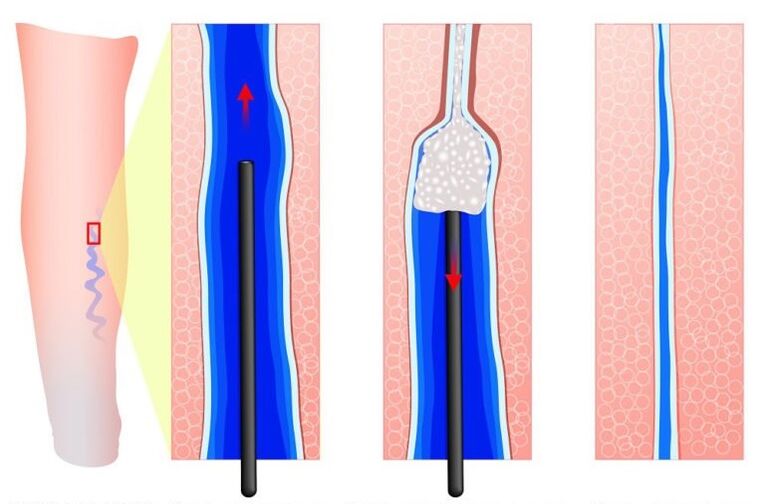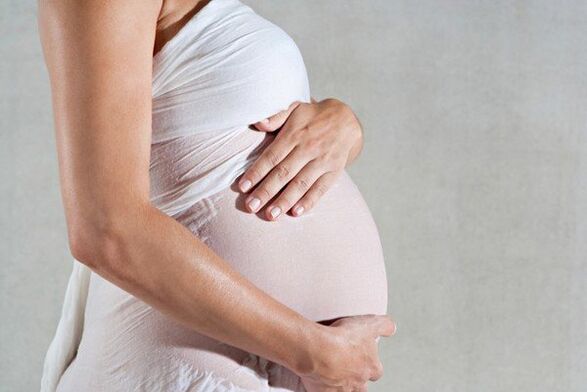Varicose veins (varicose veins) are a disease that is accompanied by an increase in length, the formation of pathological tortuosity of the serpentine veins, irreversible saccular enlargement of their lumen, and valve insufficiency. The lower pelvic organs are involved in the process of varicose veins. The mechanisms of disease progression are different. Doctors include the perineum area, external and internal genitals as atypical localizations.
General information on pathology
The process of blood flow through the veins proceeds in such a way that, under physiological conditions, prerequisites are created for the development of stagnation and outflow of blood.
Varicose veins of the vulva (VV) - vasodilation of the external genitalia. The disease manifests itself in women with pelvic and leg varicose veins, as well as in pregnant women. In 30% of cases, pelvic varicose veins involve the perineum and vulva.
The start of treatment for this disease is delayed due to the location in the intimate place. Women are shy. In some cases, patients experience no pain or discomfort. But labial varicose veins during pregnancy and not only when carrying the fetus continue complications: blockage of veins by thrombus (thromboembolism), disorders of sexual sensitivity, pain in the perineum, psychoemotional problems and family conflicts.
The mechanism of occurrence of pelvic canal congestion is not fully revealed. The main cause of this disease is called damage to the gonadal venous valve (ovary). This causes a backflow of blood and increases the pressure in the lower pelvic venous nodes. Valve insufficiency can be acquired or congenital. It gets worse with age or with pregnancy.
Secondary forms of pelvic organ VVV are associated with gynecological pathologies: endometriosis, tumors of the pelvic organs.
Diagnosis of the disease is difficult due to the fact that there are no specific symptoms in its course. It is based on ultrasound results (ultrasound).
To distinguish between primary and secondary forms of pathology, the Valsalva test was used during sonographic examination. With a secondary cause of pelvic varicose veins, it is negative.
Labial varicose veins with VBT
To establish the diagnosis of labial varicose veins, a doctor’s examination is required. The symptoms of the disease are as follows:
- varicose veins on the genitals;
- pain in the external genital area;
- heaviness and burning in the perineum;
- swelling of the perineum at the end of the day.
Chronic pelvic pain occurs less frequently (in 30% of cases).
After the diagnosis is established, studies are conducted to identify the level of complexity of the pathological process and to prescribe adequate treatment. Some events are taking place:
- examination of the perineum and leg veins with angioscanning ultrasound - USAS;
- perform ultrasonography of the pelvic canal, including vaginal, uterine, parametric, ovarian, iliac, inferior vena cava and renal veins;
- according to the indications, multiple spiral computed tomography (MSCT), selective ovaricography and pelvic phlebography (SOFT) were performed.
Doctors call the characteristic feature of varicose veins on the labia with VBT that the disease is progressive and combined with the transformation of the intrapelvis veins.
Treatment of vulvar varicose veins with lower pelvic varicose veins
IV treatment is prescribed based on symptoms and diagnostic results.
In complex drug therapy for the treatment of systemic chronic venous pathology, nonsteroidal anti-inflammatory drugs and phlebotropic drugs are prescribed.
Prescribe pharmacotherapy with antiplatelet agents, intrapelvic blockade with antihypoxin, physiotherapy with ultrasound, therapeutic exercises. Antioxidants and enterobiotics are added to the therapy.
According to the symptoms, phlebosclerosing treatment is carried out - sclerotherapy. The ship was "sealed" with drugs and lasers. It stopped working. This procedure does not use special anesthesia methods. It is done on an outpatient basis and produces a cosmetic effect.

With the proliferation of pelvic veins, expansion and backflow of blood through the gonadal (ovarian) veins, surgical operation to remove the vein is indicated. In case of enlargement of labia minora varicose veins, it is removed.
Varicose veins of the vulva during pregnancy
Pregnancy is the first most common risk factor leading to the onset of VVV. Significant and persistent increases in progesterone concentrations that are already in the early stages of pregnancy reduce venous tone and worsen the affected blood flow. Also, VBT, which involves the perineum and vulva, is associated with large venous compression in the retroperitoneal region (iliac vein and inferior vena cava) by the pregnant uterus.

Doctors recommend compression garments during pregnancy.
Often vulvar varicose veins occur bilaterally. Signs of the disease:
- significant increase in vulvar veins at 18-24 weeks during the first pregnancy, from 12 weeks with repeated pregnancies;
- discomfort in the groin;
- pulling, aching, dull ache in the pelvic area;
- pain during intercourse;
- pruritus vulva;
- swelling of the genitals and perineum.
Signs of pathological progression with the course of pregnancy. In addition to increasing the size of the varicose veins, their compaction is determined by the third trimester. The characteristic symptoms of IV are its combination with inguinal varicose veins during pregnancy or varicose veins in the legs.
Instrumental examination for labial varicose veins in pregnant women is limited to their ultrasonography, as well as foot ultrasonography, because painful changes in the venous bed undergo involution in the postpartum period.
In most cases (about 80%), from the first day of childbirth, the symptoms of varicose veins during pregnancy begin to decrease and are minimized 2-8 months after the birth of the baby. A complete return of the vessel diameter to its original value does not occur.
In 4-8% of women, the IV does not disappear after childbirth, and the disease progresses.
An interesting feature is the relationship between the end of the lactation period or the reduction in the amount of breastfeeding in the rate of loss of varicose veins in the groin in women. The shortened lactation period is accompanied by a decrease and loss of dilated veins and vice versa. This proves that perineal varicose veins during pregnancy are associated with changes in hormone levels.
Treatment of perineal varicose veins during pregnancy
The basis of therapy for varicose veins during pregnancy is phlebotropic treatment. In the main part of infertile women, IV begins in the II and III trimesters. During this period, diosmin preparations can be used. The severity of pathological symptoms is reduced by micronized pure flavonoid fractionation. Itching is relieved with zinc paste and H1-histamine receptor blockers.
Low molecular weight heparin in prophylactic doses prevents venous thrombosis and pulmonary embolism (blockage of blood vessels).
As an option for compression treatment, it is prescribed to wear tight elastic underwear using latex or gauze pillows. It relieves labia swelling and heaviness. Special compression jerseys for women with vulvar varicose veins help a lot.
If complications develop, such as local thrombophlebitis, surgical treatment is required.
When conglomerates of varicose veins are found on the genitals, questions arise about the method of delivery. Natural childbirth is allowed with vulvar varicose veins. In contrast, the risk of surgery during cesarean section is higher than the onset of bleeding from a painful duct during childbirth. This is rare. But with vaginal varicose veins, cesarean section is often performed.
Prevention of labial varicose veins
The main factor in the formation of varicose veins in the groin is the pregnancy of the fetus. It is difficult to name any method of prevention, taking into account the fact that during pregnancy there are some restrictions on many therapeutic measures. Some tips to follow:
- exclude physical and static stress;
- follow a diet;
- perform therapeutic exercises, in which movement accelerates the outflow of blood from the legs and lower pelvic organs;
- in case of vascular dysfunction, the presence of varicose veins before pregnancy, it is necessary to take phlebotropic drugs, wear compression underwear.
An effective method of prevention is considered to be surgery on the ovarian veins, surgery for other pathologies associated with varicose veins. This reduces the phenomenon of pelvic venous congestion, reduces the risk of varicose veins in the labia.
Vulvar varicose veins are a common disease in women with pelvic, leg, or leg varicose veins during pregnancy.
To improve the quality of treatment of patients with chronic venous disease, it is important to detect the disease, differentiate methods of diagnosis and treatment of this condition.




































